Some days ago, I wrote about our eTV project. The blog post had some pictures but no more details. I want to tell you some details about this project because it's simply awesome.
The project was a research project of our framework team and was started just for fun. The use-case was simple: Our room had 4 walls and 3 were full with pictures and world maps. Only one wall was empty. Why not using a flat TV for showing different content like livestreams, comic strips, images.
The idea was great and some days later, the last wall was full. A nice 43" flat TV was mounted.
We thought that a RaspberryPi could bring the content to the TV because it's a small device and fits behind the TV. Java works without problems on the Pi and JVx as well.
After all hardware pieces were ready, it was time to think about the software because a sort of control center was needed to implement some features. The plan was to write a simple server which has a set of commands like: open website, show image, play livestream, execute command, upload file, download file.
The server was implemented as simple socket server, with JVx. It executes pre-configured commands and has some important control features: take screenshot, next - previous window, get window list, close window. The server has no GUI and is more or less a window/process manager.
The server has no GUI, but we need a GUI to control the server. We wrote a simple JVx application as remote control. The remote control application was deployed on a Jetty application server (on the RasPi, with vaadin UI) and as mobile JavaFX application. Jetty runs fine on the RasPi and our vaadin UI as well.
The TV with RaspberryPi, streaming a Video from YouTube:
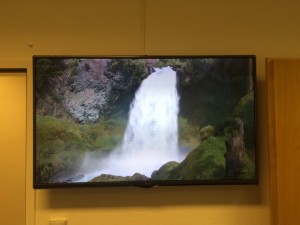
eTV YouTube Stream
After we were ready with the server, we tried to create a simple JVx demo application to demonstrate JVx on embedded devices. It was funny to use eTV for live streams or to show images, but what about real-world use-cases?
The idea was about a JavaFX application, running on the RasPi. The application could be a monitoring app for a warehouse with a nice looking frontend and a backoffice view for administration. It's usual to have a nice looking frontend and a not so nice looking backoffice part.
We've implemented an application for a big assembly hall. The application is a styled JVx application but still 100% JVx. We've used VisionX to create the UI:
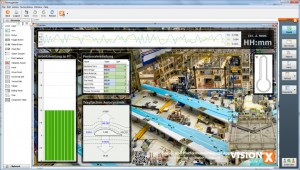 VisionX design mode |
|
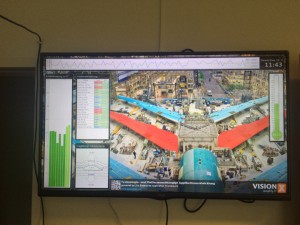 TV mode |
The application in VisionX is not 100% the same as on the TV because of the screen resolution, but it's the same source code and VisionX works with this application. The application on the TV hides the application frame and only shows the screen content, but this is a supported feature.
The UI technology is not JavaFX! We tried to use JavaFX but it wasn't possible because the RasPi had performance problems with the amount of nodes. It wasn't possible to reduce the amount of used nodes with standard JavaFX controls. Overclocking the Pi didn't solve the problem.
We simply switched to Swing and didn't have any performance problems. So, the UI technology is good old Swing. It works great in combination with the RasPi and we think the result is also nice!
The application is a monitoring application for different events, like performance, effort, pressure, temperature, aerodynamics, alerts. We did connect a temp sensor and two buzzers to get a better real-world experience and because it was easy to support with a RasPi. Initial setup:
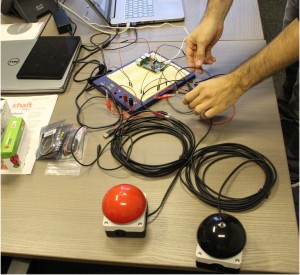
Initial setup
The backoffice/backend was deployed as web application (Jetty on RaspberryPi, JVx vaadin UI) because it should be possible to use it on tablets or smartphones without native apps:
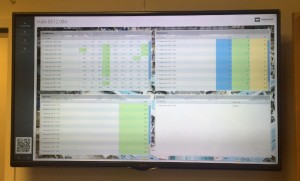
Backend view
The same UI on mobile phones:
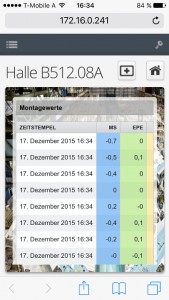 Mobile view |
|
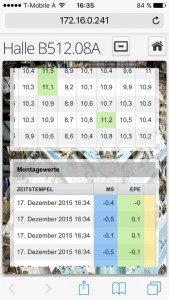 Mobile view (no menu) |
The application is a 100% JVx application with Swing UI and vaadin UI. Everything runs directly on the RaspberryPi.
We've used the whole eTV system as showcase application at DOAG conference in November:
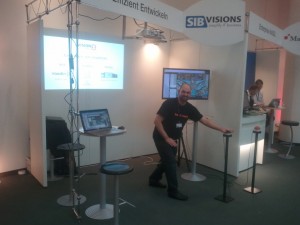
eTV @ DOAG 2015
The results of our "research project" are awesome and eTV is a ready-to-use product. We didn't code one line of code to support different UI technologies and didn't have problems with resolutions of tablets, smartphones or the TV (#responsive).
Thanks to JVx it was super easy to create an amazing application.
![]()
![]()









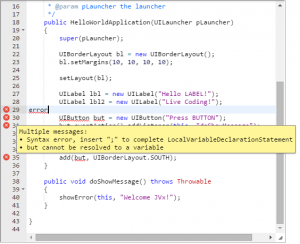
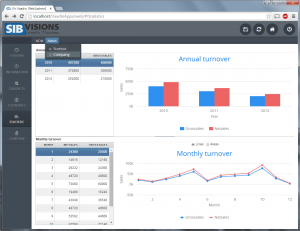
 RSS-Feed
RSS-Feed